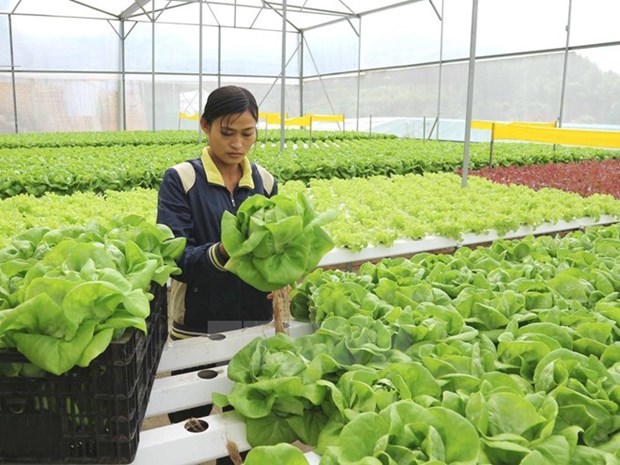Agriculture restructuring help optimise strength of sectors, localities
After five years of restructuring, the agricultural sector has recorded numerous achievements in improving its production structure and effectiveness, while the strength of each locality has been optimised and many major agricultural products improved their competitiveness in the market.
 Illustrative image (Source: VNA)
Illustrative image (Source: VNA) Hanoi (VNA) – After five years of restructuring, the agricultural sector has recorded numerous achievements in improving its production structure and effectiveness, while the strength of each locality has been optimised and many major agricultural products improved their competitiveness in the market.
The structure of agricultural products for export has changed in the direction of increasing the ratio of advantageous products such as aquatic products, vegetable, fruits, wood and forestry products, and decreasing those with rising supply sources, including rice.
So far, localities, especially those in climate change-affected regions, have replaced 627,700 hectares of ineffective rice cultivation with aquatic, fruit tree and crop farms with higher economic value.
Many localities have developed massive fields for the cultivation of rice, vegetable and flower in line with value chain, along with concentrated industrial and fruit tree regions.
Alongside, plant varieties and cultivation techniques have been improved to enhance the quality and added value of the products, therefore the productivity and quality of major products, including rice, dragon fruit, lychee, longan, grapefruit and tea, have increased.
In the breeding sector, the number of large farms has risen from 8,796 in 2013 to 15,096 in 2017, with strong growth of high technology industrial breeding with closed production-selling process, meeting domestic demand and export.
In the forestry area, an average of 23,000 hectares of forest, 90 percent of which being production one, have been planted every year. The ratio of controlled and origin certified varieties have reached 85 percent, up 13 percent compared to that in 2013.
Wood production from planted forests more than doubled to 18 million cubic metres in 2017 from 8 million cubic metres in 2013, meeting about 80 percent of the demand for material wood. Profit of forest farmers has risen 25-30 percent.
In the aquatic sector, localities have expanded concentrated shrimp and fish farming using high and environmental-friendly technologies, with focus on shrimp and tra fish. Fisheries logistics services have been re-organised, while the model of production in chains, and production team and groups have shown their efficiency.
Thanks to strong restructuring, agricultural sector’s market has been expanded to 180 countries and territories. In the first seven months of 2018, the export revenue of the sector reached 22.2 billion USD, a rise of 7.8 percent year on year.
According to Minister of Agriculture and Rural Development Nguyen Xuan Cuong, in the 2017-2020 period, the planning, strategy and advantages of each sector and locality have been reviewed and classified into three levels: national (including products with export value from 1 billion USD, pork and cattle meat), provincial and local, in association with the building of new-style rural area in the model of “One Commune – One Product”.
He said that agricultural products will be adjusted in accordance with the market demand and climate change adaptation, adding that green and organic agriculture will be encouraged.
Nguyen Ngoc Oai, Acting Director of the Vietnam Directorate of Fisheries, with the target of added value rise of at least 5 percent per year, the fishery sector will encourage the upgrading of processing factories to optimise productivity and reduce cost.
The sector will strengthen the processing of products with high added value such as shrimp, tuna, tra fish, seaweed, mollusk, and by-products, while applying advanced technology in processing and storing.
At the same time, Nguyen Quoc Tri, head of the Vietnam Administration of Forestry, said that in order to fulfil the target of 42 percent in forest coverage in 2020, the sector will concentrate on sustainable and effective management and exploiting of natural forests in association with protection of forest and biodiversity.
Meanwhile, the model of agri-silviculture, or the combination of growing of agricultural crops with simultaneously raised and protected forest crops, will be applied, along with the development of herbal plants, the utilization of forestry products besides wood and eco-tourism, he added.
Tri added that concentrated material regions for wood processing and paper production will be developed, while forestry production will be implemented in value chains.-VNA













